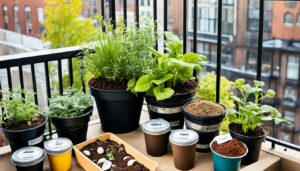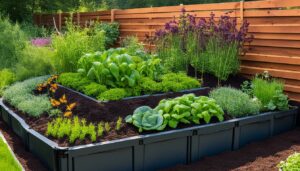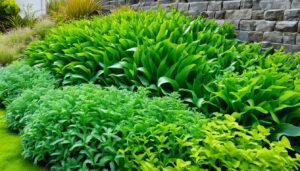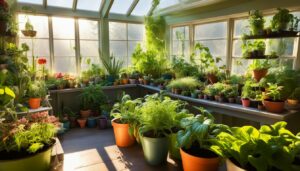Did you know that, according to a survey, nearly one-third of American households are participating in food gardening, with a notable rise in sustainable practices such as no-dig gardening? This innovative approach to cultivating the land has blossomed into a cornerstone of sustainable gardening, captivating green-thumbs and novices alike with its ecological benefits and remarkable ease. At its core, no-dig gardening is the epitome of organic gardening, designed to foster soil health and bountiful harvests without the back-breaking labor of traditional horticulture. Through mulching techniques and the pillars of permaculture, gardeners can create lush, productive gardens with raised bed gardening methods that prioritize weed prevention and soil microbiology.
Why should this matter to you? Because whether you’re a seasoned gardener looking to optimize your methods, or a curious beginner desiring to dip your toes in the fertile world of homegrown veggies, the no-dig way opens up a world of opportunities. It’s a method praised for its simplicity and synergy with nature, and it’s reshaping how countless people think about and engage with their gardens.
Key Takeaways
- Embracing no-dig gardening means less labor and more reward, simplifying garden maintenance.
- Techniques like mulching foster soil health, creating a beneficial environment for plants and soil organisms.
- No-dig gardening applies permaculture principles, offering a sustainable gardening solution.
- This approach is not limited by crop variety; you can grow a plethora of vegetables with raised bed gardening.
- Understanding the basics of soil microbiology is key to successful weed prevention and plant growth.
- Regular additions of compost and mulch are crucial for a thriving no-dig garden.
Understanding No-Dig Gardening Principles
Transitioning into the principles of no-dig gardening not only facilitates transformative experiences for gardeners but also instills a profound respect for the intricate ecosystems beneath our feet. At its heart, no-dig or no-till gardening fosters a nurturing environment that is both fruitful for crops and beneficial for the diverse life forms that constitute healthy soil.
The Foundations of No-Dig Gardening
Integral to organic gardening and permaculture practices, the no-dig method is underpinned by the simple yet revolutionary concept of minimal soil disturbance. This approach safeguards the soil’s structure and its delicate soil microbiology ecosystem comprising bacteria, fungi, and invertebrates like earthworms. Promoting the natural vitality of the soil, no-dig gardening is a testament to the potential that lies in working with, rather than against, nature’s own ingenious systems for sustaining plant life.
Benefits for Soil Health and Biodiversity
Mulching techniques are a cornerstone of no-dig gardening, serving multiple roles from moisture conservation to natural fertilizer creation through the gradual decomposition of organic layers into rich compost. Such practices not only enhance soil health but also invite a thriving biodiversity that contributes to more resilient garden ecosystems. Embracing methods that strengthen soil vitality leads to a garden brimming with life and productivity, where raised bed gardening coupled with organic mulch applications results in vibrant plant growth and improved soil structure.
The Historical Context and Modern Innovations
No-dig gardening has roots that extend back to early advocates like F.C. King, and has since been modernized by individuals such as Charles Dowding, who have refined and popularized the technique. This sustainable gardening movement today represents a blend of historical wisdom and contemporary innovation. It eschews the use of chemical inputs, instead leveraging organic principles that support a more harmonious relationship between soils, plants, gardeners, and wildlife.
| No-Dig Method | Benefits | Application in Gardening |
|---|---|---|
| Mulching | Retains moisture, suppresses weeds, and nurtures soil | Mulch applied in layers over garden beds |
| Soil Microbiology Preservation | Promotes healthy root development and nutrient uptake | Minimal soil disruption to protect microbial life |
| Organic Material Recycling | Converts yard and kitchen waste into soil amendments | Composting and using organic matter as topdressing |
| Biodiversity Encouragement | Attracts beneficial insects and reduces pests | Integrating flowering plants and omitting pesticides |
| Raised Bed Utilization | Improves drainage and eases garden management | Building raised beds filled with no-till soil and mulch |
No-Dig Gardening Techniques and Best Practices
The art of no-dig gardening has revolutionized the way we approach the cultivation of our gardens. By adopting this method, you can indulge in organic gardening while nurturing a sustainable gardening environment. The bedrock of no-dig gardening is simple: build the soil up, don’t dig it down. This approach relies on a variety of materials to create layers above the ground, which correlates with the ethos of permaculture—working with nature, rather than against it.
Mulching techniques are central to no-dig gardening and offer a multitude of benefits, from improving soil fertility to effective weed prevention. A well-mulched garden conserves moisture and reduces the need for frequent watering, helping plants thrive even during drier periods. Furthermore, employing raised bed gardening can facilitate the no-dig method by clearly defining plantings and further reducing soil compaction.
- Select a garden spot that receives ample sunlight.
- Use natural mulch like leaves, straw, or dry grass clippings.
- Integrate nitrogen-rich materials like fresh grass clippings or kitchen scraps.
- Sow seeds by simply moving the mulch aside.
- After harvest, replenish with additional mulch and compost for the next season.
The transition into no-dig gardening does not necessitate complex steps or elaborate measures. Start by observing the natural processes in your garden and adapting to a less invasive maintenance regime. Below, a comparative table illustrates the stark contrasts between traditional gardening and no-dig methods.
| Gardening Aspect | Traditional Gardening | No-Dig Gardening |
|---|---|---|
| Soil Preparation | Tilling and digging | Layering organic materials |
| Weed Control | Frequent weeding | Mulch suppresses weeds |
| Irrigation Needs | Higher water usage | Reduced due to moisture retention |
| Soil Health | Possible disruption of microbiology | Promotes a healthy soil ecosystem |
| Fertility Management | Dependent on external fertilizers | Mulch decomposes into rich compost |
Whether you aspire to grow a variety of vegetables or a stunning display of flowers, no-dig gardening can be tailored to your aspirations. Embracing this technique not only makes gardening more enjoyable and less labor-intensive but also contributes positively to the environment. Now is the ideal time to transform your gardening practices and watch as your garden becomes a symbol of sustainability and vitality.
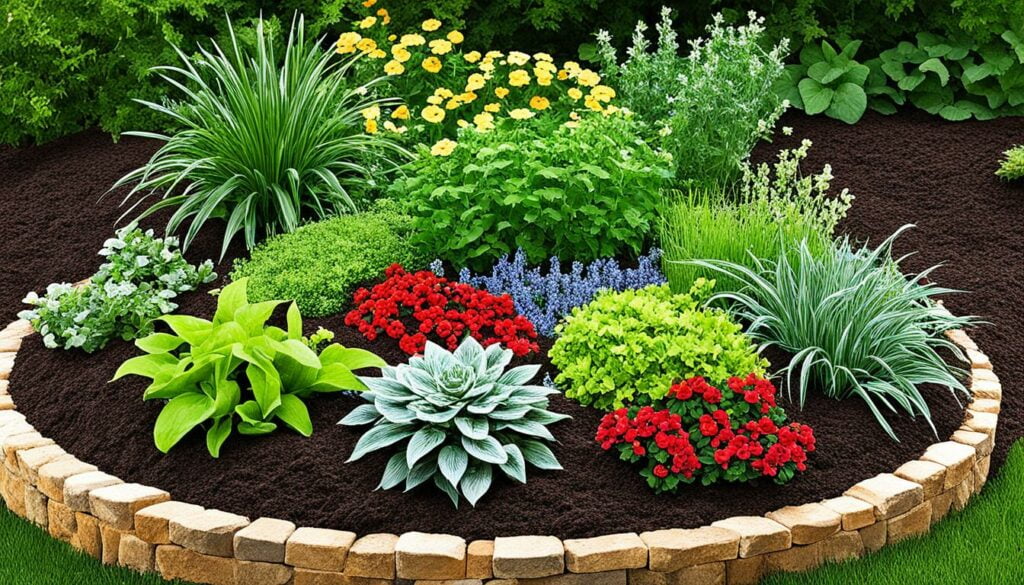
Conclusion
Embarking on the journey of no-dig gardening is not only an adoption of a method but a commitment to a lifestyle that cherishes and nurtures the environment. It is a practice that places soil health at the forefront, harnessing the principles of permaculture to create a sustainable gardening system. By minimizing soil disturbance, gardeners allow the intricate soil microbiology to flourish, creating a robust foundation for a healthier ecosystem. It’s a hands-off yet mindful approach that aligns the gardener’s efforts with nature’s inherent patterns, contributing to a greener and more sustainable future.
Embracing the No-Dig Lifestyle
Organic gardening enthusiasts appreciate how no-dig techniques simplify cultivation while maximizing yield. Switching to a no-till system results in tangible benefits for both the gardener and the environment. The thick layers of mulch and the organic matter that define this approach contribute not only to weed prevention but also to the conservation of soil moisture and the gradual improvement of soil structure. By adopting raised bed gardening and no-dig methods, gardeners reduce their carbon footprint and take an active role in promoting an ecologically sound way of living.
Further Resources and No-Dig Community
For those inspired to explore deeper into the world of no-dig gardening, the landscape is rich with knowledgeable pioneers and supportive communities. Assets like Charles Dowding’s and Masanobu Fukuoka’s insightful literature serve as cornerstones for understanding and implementing mulching techniques and soil management practices. Additionally, vibrant online forums and social media groups welcome newcomers and provide seasoned advice, creating a tapestry of shared experiences and collective learning. The growing interest in sustainable living positions no-dig gardening as an emblem of environmental stewardship, paving the way for a regenerative and bountiful approach to working with the land.



